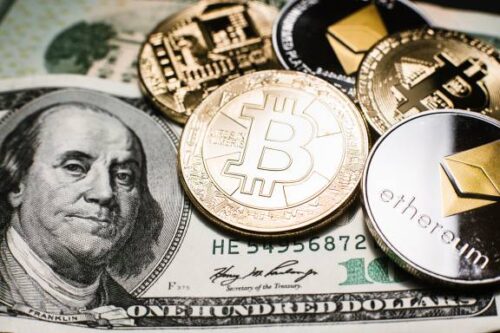Introduction
In recent years, the world of finance has seen the rise of a new form of currency known as cryptocurrency. With the increasing popularity of digital currencies such as Bitcoin, Ethereum, and Litecoin, many people are left wondering what sets them apart from traditional fiat money. In this article, we will explore the key differences between fiat money and cryptocurrency, including their characteristics, uses, and potential benefits and drawbacks. You may use Quantum Code to create money by trading cryptocurrencies.

What is Fiat Money?
Fiat money, also known as legal tender, is a type of currency that is issued and backed by a government. The term “fiat” is Latin for “let it be done,” and it refers to the government’s declaration that the currency is legal tender for all debts, public and private. In other words, fiat money is money that is accepted as a medium of exchange because the government says it is.
One of the key characteristics of fiat money is that it is not backed by a tangible asset, such as gold or silver. Instead, it is backed by the faith and credit of the issuing government. This means that the value of fiat money is determined by supply and demand, as well as the stability of the issuing government and its economy.
Fiat money is also controlled by central banks, which are responsible for printing and issuing the currency. They also have the power to control the money supply and interest rates in order to stabilize the economy.
What is Cryptocurrency?
Cryptocurrency is a form of digital currency that uses encryption techniques to regulate the generation of units of currency and to verify the transfer of funds. Cryptocurrency operates independently of a central bank or government.
One of the key characteristics of cryptocurrency is that it is decentralized, meaning that it is not controlled by any single entity or institution. Instead, it is based on a peer-to-peer network, and transactions are recorded on a public ledger known as a blockchain.
Another important characteristic of cryptocurrency is that it is digital, meaning that it exists only in the digital world. This allows for fast and easy transactions across borders, without the need for physical currency.
Uses of Fiat Money and Cryptocurrency
Fiat money is the most widely used form of currency in the world, and it is accepted for a variety of transactions, including buying goods and services, paying bills, and making investments. It is also used as a store of value, as well as a medium of exchange.
Cryptocurrency, on the other hand, is still a relatively new form of currency, and it is not yet widely accepted for transactions. However, it is becoming increasingly popular as a form of investment, as well as a means of making fast and easy digital transactions.
Benefits and Drawbacks of Fiat Money and Cryptocurrency
Fiat money has a number of benefits, including the fact that it is widely accepted, stable, and easy to use. It is also backed by the faith and credit of the issuing government, which provides a degree of security.
However, there are also some drawbacks to fiat money. One of the main drawbacks is that it is subject to inflation, which can erode the value of the currency over time. Additionally, fiat money is controlled by central banks, which can potentially lead to monetary policy that is not in the best interests of the people.
Cryptocurrency, on the other hand, has a number of benefits, including the fact that it is decentralized, fast and easy to use, and can be used for transactions across borders. Additionally, it is not subject to inflation, as there is a finite supply of most cryptocurrencies.
However, there are also some drawbacks to using cryptocurrency. One of the main drawbacks is that it is not widely accepted for transactions, which can limit its usefulness as a medium of exchange. Additionally, the value of cryptocurrency can be highly volatile, making it a risky investment.
Another drawback is the lack of regulation and oversight, which can make it vulnerable to fraud and hacking. Moreover, the anonymity of the transactions can attract illegal activities like money laundering, tax evasion and other criminal activities.
Conclusion
In conclusion, fiat money and cryptocurrency are two distinct forms of currency, each with their own unique characteristics, uses, and benefits and drawbacks. While fiat money is widely accepted and stable, it is subject to inflation and controlled by central banks. Cryptocurrency, on the other hand, is decentralized, fast and easy to use, but not yet widely accepted and subject to high volatility.
As the world continues to evolve, it is likely that we will see an increasing use of cryptocurrency, but it is also important to consider the potential risks and drawbacks associated with this new form of currency. Therefore, It is important to weigh the pros and cons before investing in any form of currency, whether it be fiat or cryptocurrency.





